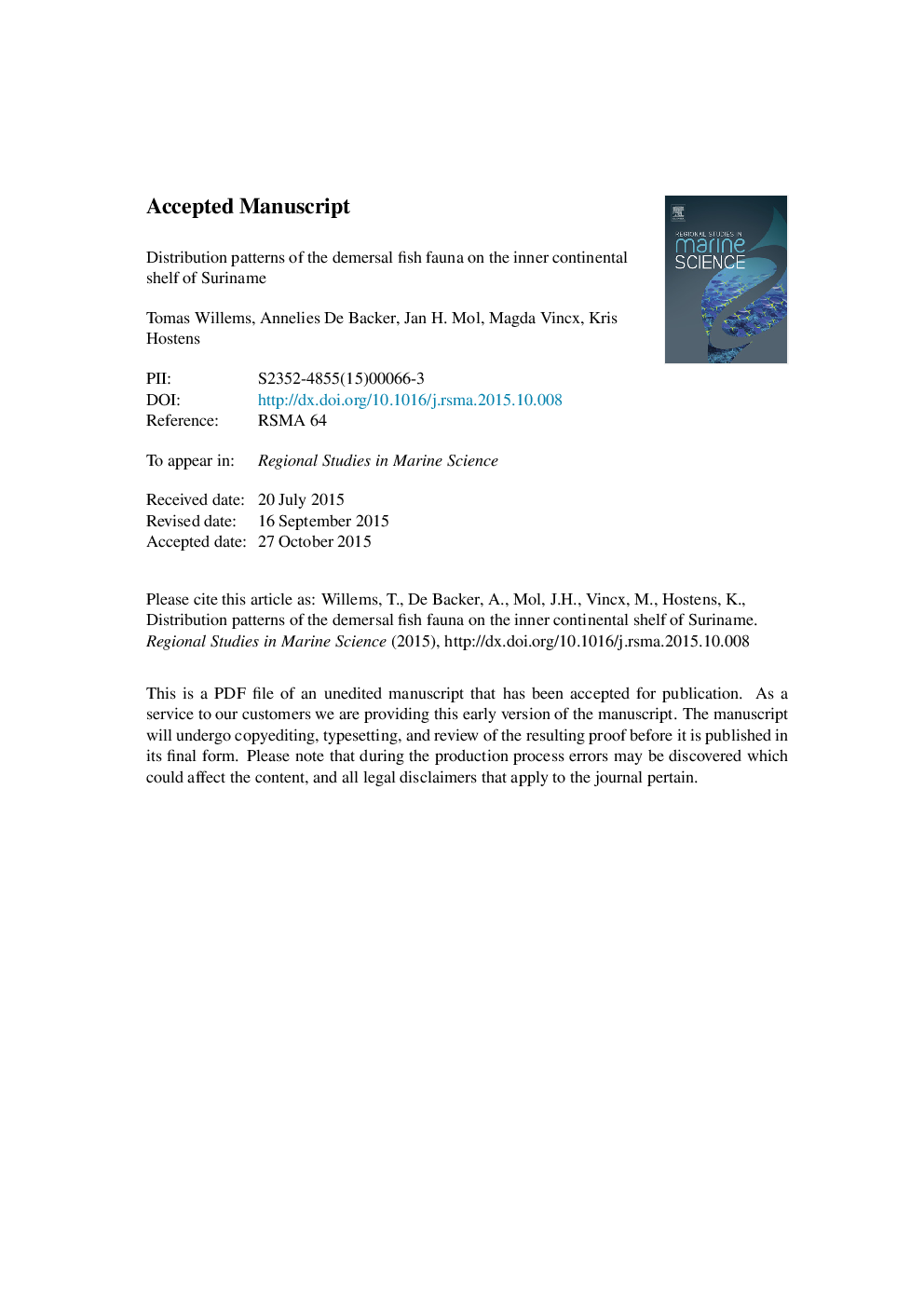| Article ID | Journal | Published Year | Pages | File Type |
|---|---|---|---|---|
| 6363213 | Regional Studies in Marine Science | 2015 | 29 Pages |
Abstract
This study aimed to characterise the spatio-temporal patterns of the demersal fish community in the shallow (<40 m) inner shelf waters of Suriname, based on (bi)monthly data for the period February 2012-April 2013. From 148 demersal trawl samples, distributed over 15 locations, 98 fish species were identified. Stellifer rastrifer, Amphiarius rugispinis and Cynoscion jamaicensis represented 50 % of the catches. Cluster analysis revealed three species assemblages, occurring in a nearshore-offshore depth gradient. A coastal fish assemblage occurred in the shallow turbid waters, characterised by muddy sediments with relatively high organic carbon content. A transition assemblage around 27 m water depth marked the shift towards a very different offshore fish assemblage on the deepest sampling locations (34 m), which were characterised by coarser sediments, with clear overlying waters. The coastal assemblage represented the 'sciaenid community' of tropical shelves, dominated by Sciaenidae and Ariidae. The offshore assemblage had a significantly lower fish density and diversity, and contained representatives of fish families typical for deeper tropical shelves, such as Paralichthyidae, Triglidae and Lutjanidae. The shift between the coastal and offshore fish assemblage was the most important feature of the demersal fish community, and coincided with a transition between two principal ecosystems: a coastal, river influenced system fuelled by detritus versus an open shelf system based on primary production. Whereas pelagic fishes are known to gain in importance on the open shelf, demersal fishes thrived in the coastal ecosystem, together with a potentially important epibenthic food source, the Atlantic seabob shrimp Xiphopenaeus kroyeri. In Suriname, large demersal (mainly sciaenid) fishes are the main fisheries resource for the artisanal fleet in the nearshore waters below 20 m depth. Because juveniles of commercially important fishes were abundant in our coastal trawl catches, we suggest the shallow nearshore waters have a main nursery function.
Related Topics
Physical Sciences and Engineering
Earth and Planetary Sciences
Oceanography
Authors
Tomas Willems, Annelies De Backer, Jan H. Mol, Magda Vincx, Kris Hostens,
